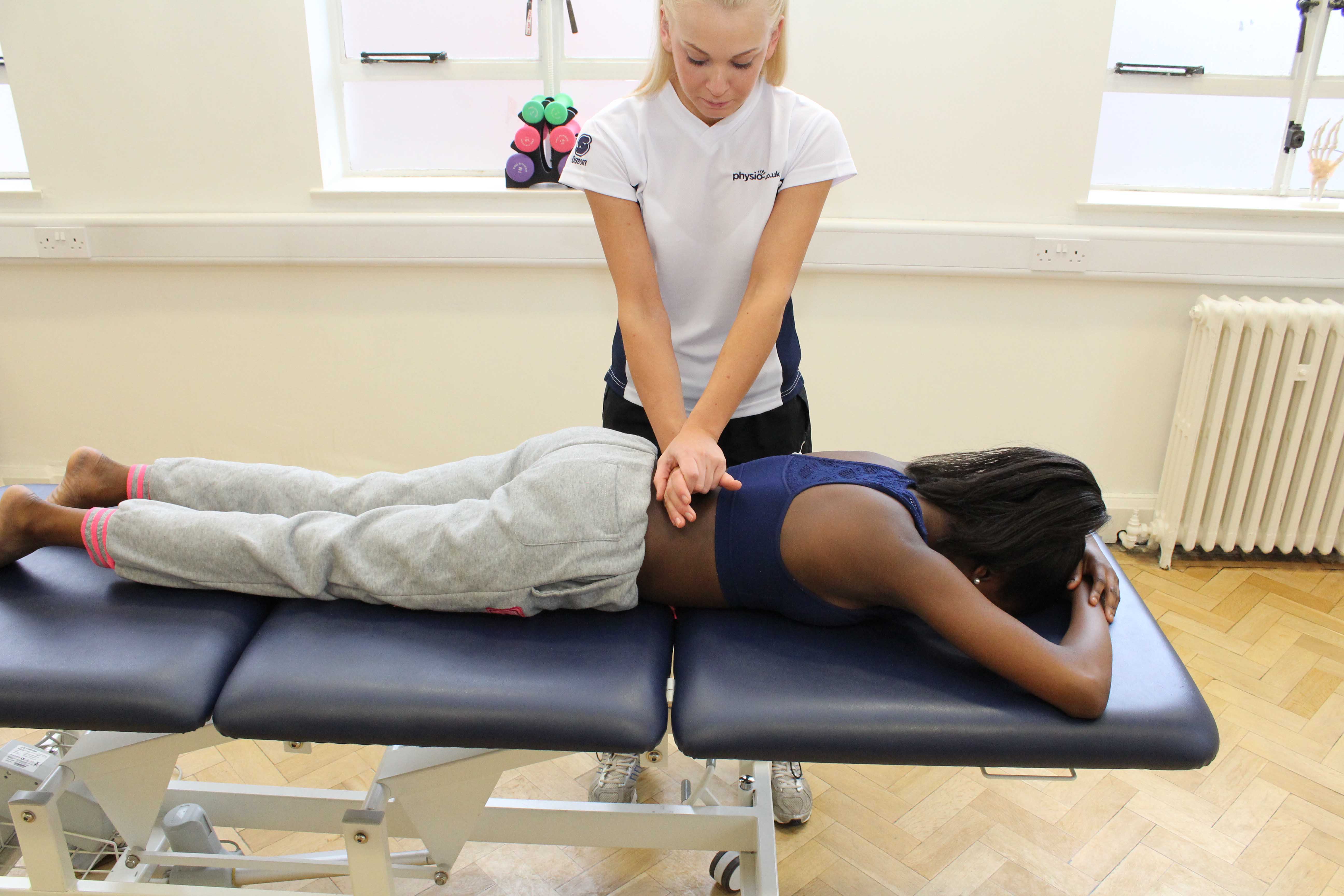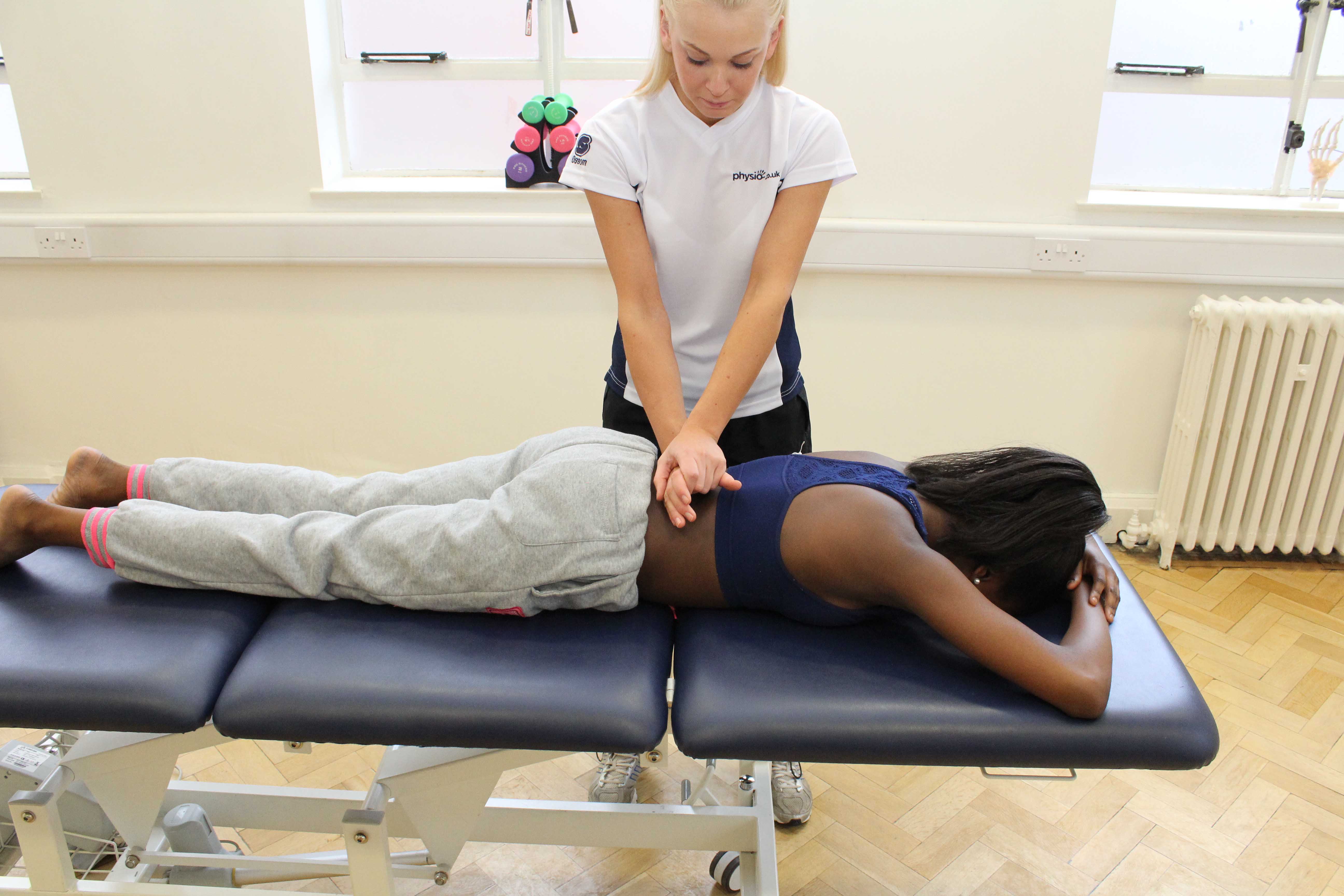What is pain?
Pain is a protective mechanism which alerts us to harmful stimuli to make us withdraw. Pain is our body’s way of protecting us from the danger. Pain creates an awareness of an injury to part of the body creating a mental barrier for us to be reminded to protect the area. Pain signals are passed from this area to the brain through electrical impulses, the brain then responds with an appropriate reaction. Pain is the body’s natural protective mechanism but can sometime prevent / hinder rehabilitation as the individual will be experiencing too much pain to enable compliance with their physiotherapy session.
 Above: Mobilisations of the lumber vertebrea by physiotherapist to relieve pain and stiffness
Above: Mobilisations of the lumber vertebrea by physiotherapist to relieve pain and stiffnessTypes of Pain
There are two main types of pain. Nociceptive and Non-Nociceptive which both can be divided into two types of pain groups; these are explained as:
- Nociceptive
- Somatic – this pain is as a result of tissue and skeletal structures. This pain is usually sharp sensation and localised. This type of pain is well treated with Non steroidal anti-inflammatory drugs and paracetamol.
- Visceral – this type of pain comes from the internal organs within the thorax, abdomen and pelvic regions. This pain can be vague and non specific which may result in a dull ache or referred pain into a different area of the body. This pain can be treated with Opioids which are a form of analgesics (painkiller).
- Non-Nociceptive
- Neuropathic – This type of pain is nerve pain and can originate from peripheral nerves (nerves outside of the spinal cord) or the central nervous system (spinal cord). This type of pain may be as a result of nerve degeneration (neurological conditions), nerve inflammation, infection or compression / pressure. The symptoms which neuropathic pain can present as can include hypersensitivity, anaesthesia (numbness), paresthesia (tingling / altered sensation) and weakness.
- Sympathetic – this is pain which is due to an abnormality in the sympathetic nervous system. This can lead to conditions such as complex regions pain syndrome, which usually occurs within the arms and legs. Treatment can include intensive physiotherapy and medication such as anti-depressants and nerve blocks.
- Acute pain is pain which has developed recently.
- Sub-acute pain is the transition of acute pain to chronic pain.
- Chronic pain is pain which has been present for several months.
 Above: Physiotherapist educating client about the potential pain they may experience
Above: Physiotherapist educating client about the potential pain they may experienceHow can Physiotherapy help pain?
Physiotherapy can help the individual who is suffering with pain. They can assist with the following:
- Decreasing pain
- Pacing activities
- Sign post to relevant services (medication reviews and pain management teams)
- Pain management strategies
- Improve independence
- Relaxation techniques
What Physiotherapy Treatments can be expected to help assist with pain?
There are many different techniques which can be used (dependent upon cause of pain) to help treat pain as a symptom. Some of the treatments which can be used are:
- Electrotherapy (PSWD, Interferential, TENS)
- Acupuncture
- Massage
- Strengthening exercises
- Range of movement exercises
- Manipulations
- Pacing activities education
- Hydrotherapy
 Above: Trigger point massage applied to knotted muscle to relieve pain
Above: Trigger point massage applied to knotted muscle to relieve painSummary
Pain can cause distress to the individual preventing them from participating in their normal activities of daily living which can be debilitating them. Physiotherapy can help the individual self manage and offer pain reducing physiotherapy treatments. For an experienced opinion please contact us or call 0330 088 7800 to arrange an appointment.

 0330 088 7800
0330 088 7800





































